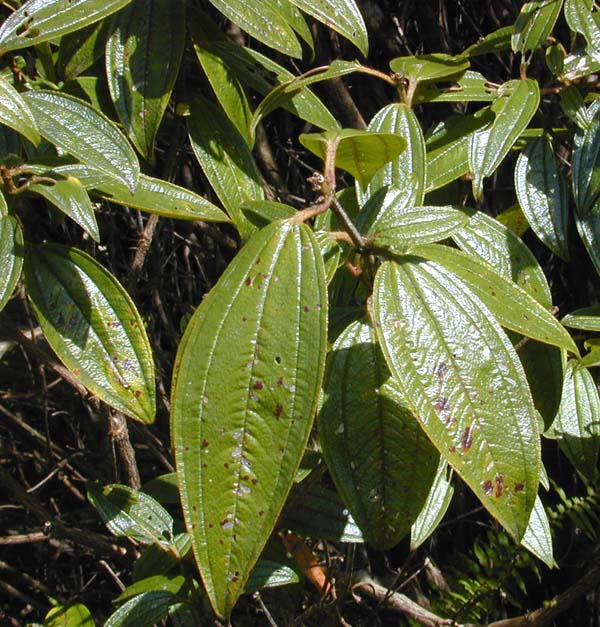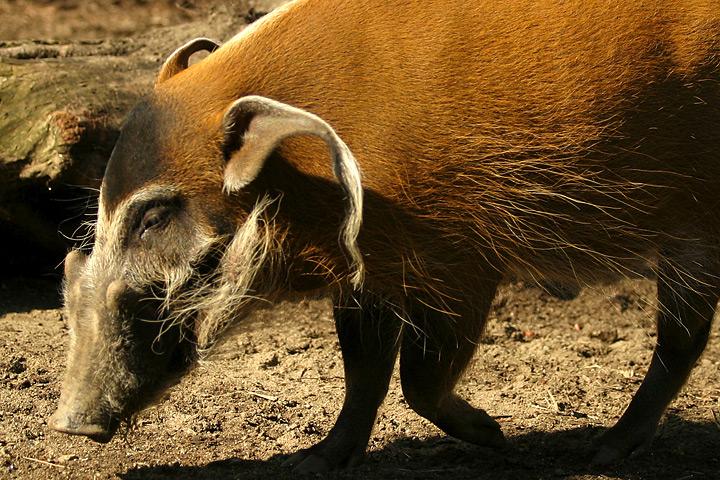|
Preussiella
''Preussiella'' is a genus of flowering plants belonging to the family Melastomataceae. Its native range is western and western central Tropical Africa, in the countries of Cameroon, Gabon, Ghana, Guinea, Gulf of Guinea Island, Ivory Coast and Liberia. The genus name of ''Preussiella'' is in honour of Paul Rudolf Preuss (1861–1926), a German botanist and researcher. He founded and directed a botanical garden in Kamerun (now called Cameroon Cameroon, officially the Republic of Cameroon, is a country in Central Africa. It shares boundaries with Nigeria to the west and north, Chad to the northeast, the Central African Republic to the east, and Equatorial Guinea, Gabon, and the R ...). It was first described and published in Nat. Pflanzenfam., Nachtr. Vol.1 on page 267 in 1897. Known species, according to Kew: *'' Preussiella gabonensis'' *'' Preussiella kamerunensis'' References {{Taxonbar, from=Q17438192 Melastomataceae Melastomataceae genera Plants described in ... [...More Info...] [...Related Items...] OR: [Wikipedia] [Google] [Baidu] |
Melastomataceae
Melastomataceae () is a family of dicotyledonous flowering plants found mostly in the tropics (two-thirds of the genera are from the New World tropics) comprising c. 175 genera and c. 5115 known species. Melastomes are annual or perennial herbs, shrubs, or small trees. Description The leaves of melastomes are somewhat distinctive, being opposite, decussate, and usually with 3-7 longitudinal veins arising either from the base of the blade, plinerved (inner veins diverging above base of blade), or pinnately nerved with three or more pairs of primary veins diverging from the mid-vein at successive points above the base. Flowers are perfect, and borne either singly or in terminal or axillary, paniculate cymes. Ecology A number of melastomes are regarded as invasive species once naturalized in tropical and subtropical environments outside their normal range. Examples are Koster's curse (''Clidemia hirta''), '' Pleroma semidecandrum'' and '' Miconia calvescens'', but many othe ... [...More Info...] [...Related Items...] OR: [Wikipedia] [Google] [Baidu] |
Ernest Friedrich Gilg
Ernest (or Ernst) Friedrich Gilg (12 January 1867 in Baden-Württemberg, Germany – 11 October 1933 in Berlin) was a German botanist. Life Gilg was curator of the Botanical Museum in Berlin. With fellow botanist Heinrich Gustav Adolf Engler, Adolf Engler, he co-authored and published a syllabus on botany, botanical families, ''Syllabus der Pflanzenfamilien'' (8th edition 1919). He also made contributions to Engler's "''Das Pflanzenreich''", (e.g. the section on the family Monimiaceae). The Poaceae grass genus, ''Gilgiochloa'', was Posthumous recognition, posthumously named after him. His spouse, Charlotte Gilg-Benedict (1872–1936), was co-author in some of his publications, and has the author abbreviation Gilg-Ben. Work * ''Pharmazeutische Warenkunde'', published 1911 * ''Grundzüge der Botanik für Pharmazeuten'', published 1921 * ''Lehrbuch der Pharmakognosie''Digital editionpublished 19052nd editionpublished 1910; 3rd edition published 1922 Over the course of his li ... [...More Info...] [...Related Items...] OR: [Wikipedia] [Google] [Baidu] |
Flowering Plant
Flowering plants are plants that bear flowers and fruits, and form the clade Angiospermae (). The term angiosperm is derived from the Ancient Greek, Greek words (; 'container, vessel') and (; 'seed'), meaning that the seeds are enclosed within a fruit. The group was formerly called Magnoliophyta. Angiosperms are by far the most diverse group of Embryophyte, land plants with 64 Order (biology), orders, 416 Family (biology), families, approximately 13,000 known Genus, genera and 300,000 known species. They include all forbs (flowering plants without a woody Plant stem, stem), grasses and grass-like plants, a vast majority of broad-leaved trees, shrubs and vines, and most aquatic plants. Angiosperms are distinguished from the other major seed plant clade, the gymnosperms, by having flowers, xylem consisting of vessel elements instead of tracheids, endosperm within their seeds, and fruits that completely envelop the seeds. The ancestors of flowering plants diverged from the commo ... [...More Info...] [...Related Items...] OR: [Wikipedia] [Google] [Baidu] |
Tropical Africa
The Afrotropical realm is one of the Earth's eight biogeographic realms. It includes Sub-Saharan Africa, the southern Arabian Peninsula, the island of Madagascar, and the islands of the western Indian Ocean. It was formerly known as the Ethiopian Zone or Ethiopian Region. Major ecological regions Most of the Afrotropical realm, except for Africa's southern tip, has a tropical climate. A broad belt of deserts, including the Atlantic and Sahara deserts of northern Africa and the Arabian Desert of the Arabian Peninsula, separates the Afrotropic from the Palearctic realm, which includes northern Africa and temperate Eurasia. Sahel and Sudan South of the Sahara, two belts of tropical grassland and savanna run east and west across the continent, from the Atlantic Ocean to the Ethiopian Highlands. Immediately south of the Sahara lies the Sahel belt, a transitional zone of semi-arid short grassland and vachellia savanna. Rainfall increases further south in the Sudanian Savanna, ... [...More Info...] [...Related Items...] OR: [Wikipedia] [Google] [Baidu] |
Cameroon
Cameroon, officially the Republic of Cameroon, is a country in Central Africa. It shares boundaries with Nigeria to the west and north, Chad to the northeast, the Central African Republic to the east, and Equatorial Guinea, Gabon, and the Republic of the Congo to the south. Its coastline lies on the Bight of Biafra, part of the Gulf of Guinea, and the Atlantic Ocean. Due to its strategic position at the crossroads between West Africa and Central Africa, it has been categorized as being in both camps. Cameroon's population of nearly 31 million people speak 250 native languages, in addition to the national tongues of English and French, or both. Early inhabitants of the territory included the Sao civilisation around Lake Chad and the Baka people (Cameroon and Gabon), Baka hunter-gatherers in the southeastern rainforest. Portuguese discoveries, Portuguese explorers reached the coast in the 15th century and named the area ''Rio dos Camarões'' (''Shrimp River''), which became ''C ... [...More Info...] [...Related Items...] OR: [Wikipedia] [Google] [Baidu] |
Plants Described In 1897
Plants are the eukaryotes that form the kingdom Plantae; they are predominantly photosynthetic. This means that they obtain their energy from sunlight, using chloroplasts derived from endosymbiosis with cyanobacteria to produce sugars from carbon dioxide and water, using the green pigment chlorophyll. Exceptions are parasitic plants that have lost the genes for chlorophyll and photosynthesis, and obtain their energy from other plants or fungi. Most plants are multicellular, except for some green algae. Historically, as in Aristotle's biology, the plant kingdom encompassed all living things that were not animals, and included algae and fungi. Definitions have narrowed since then; current definitions exclude fungi and some of the algae. By the definition used in this article, plants form the clade Viridiplantae (green plants), which consists of the green algae and the embryophytes or land plants (hornworts, liverworts, mosses, lycophytes, ferns, conifers and other gymnosperm ... [...More Info...] [...Related Items...] OR: [Wikipedia] [Google] [Baidu] |
Flora Of Cameroon
The wildlife of Cameroon is composed of its flora and fauna. Bordering Nigeria, it is considered one of the wettest parts of Africa and records Africa's second highest concentration of biodiversity. To preserve its wildlife, Cameroon has more than 20 protected reserves comprising national parks, zoos, forest reserves and sanctuaries. The protected areas were first created in the northern region under the colonial administration in 1932; the first two reserves established were Mozogo Gokoro Reserve and the Bénoué National Park, Bénoué Reserve, which was followed by the Waza National Park, Waza Reserve on 24 March 1934. The coverage of reserves was initially about 4 percent of the country's area, rising to 12 percent; the administration proposes to cover 30 percent of the land area. The rich wildlife consists of 8,260 recorded plant species including 156 endemic species, 409 species of mammals of which 14 are endemic, 690 species of birds which includes 8 endemic species, 250 s ... [...More Info...] [...Related Items...] OR: [Wikipedia] [Google] [Baidu] |
Flora Of Gabon
The wildlife of Gabon is composed of its flora and fauna. Gabon is a largely low-lying country with a warm, humid climate. Much of the country is still covered by tropical rainforest and there are also grasslands, savannas, large rivers and coastal lagoons. Overview Wildlife includes forest elephants, forest buffalos, various antelope and monkey species, sitatungas, leopards, three species of crocodiles, chimpanzees and gorillas, and several marine turtle species which nest along the coast. As of 2002, there were at least 190 species of mammals. Fauna Mammals Gabon has important populations of many mammals including about 35,000 gorillas, 50,000 forest elephants and 64,000 chimpanzees. About a quarter of Africa's gorillas live in Gabon. Other large mammals include the hippopotamus, forest buffalo, bongo and red river hog. A variety of monkeys occur, including the endemic sun-tailed monkey, and the near-endemic mandrill and white-collared mangabey (here near-endemic meanin ... [...More Info...] [...Related Items...] OR: [Wikipedia] [Google] [Baidu] |
Flora Of Ghana
The wildlife of Ghana is composed of its biodiversity of fungi, flora and fauna. Biodiversity Fungi Ghana is home to a significant number of fungi species including: ''Aspergillus flavus''; ''Athelia rolfsii''; ''Auricularia auricula-judae''; ''Curvularia''; ''Fusarium oxysporum''; ''Fusarium solani'' f.sp. ''pisi''; ''Gibberella intricans''; '' Gibberella stilboides''; and ''Macrophomina phaseolina''. The true total number of fungal species occurring in Ghana is in the thousands and given the generally accepted estimate that only about 7 percent of all fungi worldwide have so far been discovered and that the amount of available information is still very small. Flora The flora of Ghana is diverse with both indigenous and introduced floral species considered in Ghana's floral diversity. A total of some 3,600 species of the major regional centres of endemism represent the three major taxonomic groups. Floral diversity is more pronounced among the angiosperms represented with w ... [...More Info...] [...Related Items...] OR: [Wikipedia] [Google] [Baidu] |


